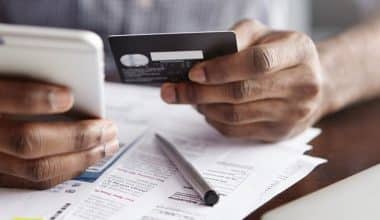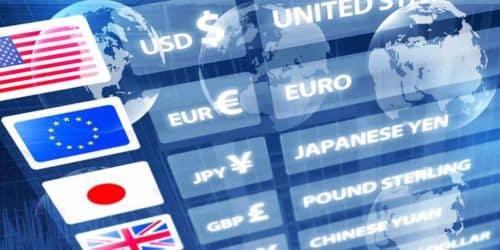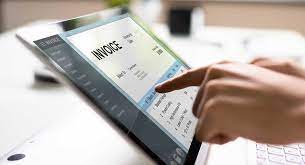In a world full of digital ways to pay, a simple money order might seem outdated. When you can give and receive money through an app or pay with a mobile wallet or a credit card that doesn’t require contact, why would you ever need a money order? Even though they are less frequently used now, money orders still fulfill a crucial need that cannot be easily satisfied by alternative forms of payment. In this article, we will define what a money order is, explain how to get one and explain how to deposit it. We will also explain the money order limit and the money order post office.
What Is Money Order
A money order is a safer option than cash or a personal check. It is usually given out by the government or a bank and works like a check. You can cash it or put it in your bank account.
People who don’t have a regular savings account often use money orders because they are easy to use and easy to turn into cash. They can be used to pay off both personal and business bills and can be bought from most institutions for a small service fee. In 1882, American Express was the first company to give out money orders, which later became known as “traveler’s checks.”
How to Get a Money Order
You can pay for something with a money order instead of a check or cash. Money orders are safer than checks for big payments because they can never bounce. This will tell you how to get it so you can pay your next bill. The following explains how to obtain a Money Order:
#1. Decide on the Amount of the Money Order
It is common practice for businesses to require that you pay for the money order in cash. In certain circumstances, you will have the option of paying using a debit or credit card.
#2. Go to Your Bank
The quickest way to get a money order if you have a bank account is to ask for one at the teller counter.
- Some banks might charge a small fee for money transfers, but many do not.
- Cashier’s checks are like money orders and are offered by some banks. Make sure the person you’re giving the money to will take a cashier’s check instead of a money order before you buy one.
- Banks keep track of the money orders you buy, which could be helpful if it gets lost.
#3. Try Local Businesses.
Money orders can be bought for a fee at places like Walmart, drug stores, and grocery stores. Visit a few locations, then pick the one with the lowest cost.
- Some places have a maximum amount for money orders. If there is a limit, simply buy many money orders until you have the total amount you require.
- This is a good choice if you need to move money and there is no bank open or close
#4. Try the Post Office
Most money orders from the U.S. Postal Service can be replaced if they get lost, stolen, or broken. Money orders bought from the USPS also have the following benefits:
- You can buy them with a bank card.
- In 29 other countries, you can cash them in.
#5. Consider Purchasing a Money Order Online
If you don’t want to buy a money order in person, you might find it easier to do so online. But online businesses usually charge higher prices than businesses in person. Payko is the best online money order business. Each day, you can only buy $200 worth of money orders from them, though.
Money Order Limit
Both money orders and cashier’s checks are good ways to pay for things, and they even look the same. But there are big differences between the two that could make one better for your needs than the other. For instance, cashier checks have a larger limit than a money order but can only be obtained from financial institutions.
Maximum Issue
The maximum dollar limit is the main distinction between money orders and cashier’s checks. Although the actual limits can vary depending on the issuer, money orders typically have a maximum limit of somewhere between $700 and $1,000. On the other hand, you can write far bigger amounts on cashier’s checks than you can on personal checks.
What’s the Limit for a Postal Money Order?
You are able to purchase postal money orders for any amount up to $1,000 per money order. You can purchase many money orders, and each one can be worth up to $1,000. If you purchase a total of $3,000 or more in money orders in a single business day, you will be required to fill out a form and show some form of identification. Even if you buy money orders from multiple post offices, you still need to complete the form and produce some sort of identification.
How to Deposit a Money Order
Instead of cashing a money order, you can deposit the funds immediately into your bank account. Postal money orders are generally accepted at any bank location, including teller windows, automated teller machines, and mobile banking apps. Some money orders may require a branch deposit before they can be used.
All you need to do is make sure the bank has a checking account you can actually use. Most banks will not allow you to put money orders into the new checkless checking accounts that they are starting to offer. You might also have trouble with a mobile-only bank when you try to pay money or get a money order. You must sign and endorse it before you can cash it, just like you would with a check. After making a deposit, the money should be accessible within a few days at the most. After it has been processed, the money is yours to do as you please, including spending it or withdrawing it. You might also put money in a savings account so that you have something to fall back on in case of an emergency.
The process of cashing or depositing a money order is quite similar to the process of purchasing one. There are a few places that make it easy to do this, but they usually charge a small fee. Visiting your own financial institution, on the other hand, will almost always allow you to avoid paying that fee. In addition, your best chance is typically to cash it at the same location where it was originally purchased.
Money Order Post Office
Sometimes you need to mail money to friends, family, or business partners. In the United States, sending money orders is one of the safest ways to do this. A money order is a written promise to pay a certain amount of money. Like a check, it can be paid or put into a bank account. But it has a lot of safety measures that make it a much better choice for sending money through the mail. For example, if you lose or steal it, you can usually get a new one. If you don’t have a bank account, you can also use it. Money orders are easy to get because they can be bought at banks, many shops, and all post offices. Here’s what you should do when sending international money orders:
#1. Decide Whether to Send a Money Order
When it comes to sending money orders through the postal service, there are both pros and cons. Advantages include increased security, the elimination of the requirement for a bank account, the ability to complete a transaction with a single payment, and the capacity to send money overseas. Possible problems with sending it include having to pay extra fees and fill out more papers, having to go to a bank or post office instead of sending the money online, being limited on how much money you can send, and sometimes having to wait for the money to be sent or received. Before you decide to send them overseas, you should carefully consider your other choices.
If you need the money quickly, you might want to wire it instead of sending a money order. With Western Union, you can send money almost quickly, but money orders have to physically travel the distance. If you need to send more than $700 abroad, you might have to buy more money orders.
#2. Look Up Which Countries Accept International Money Orders
Not all countries do. Last time I checked, only 29 countries accepted American money orders. Before receiving foreign money orders, each country may impose unique limits and conditions. Before proceeding, check with your post office to see which countries will take your money order and which may require additional paperwork on your behalf.
#3. Visit a Post Office.
Talk to a person at the counter. Use an online post office finder if you don’t know where your nearest post office is. Money orders can be bought at any full-service U.S. post office. Money orders can also be bought at credit unions, banks, and some big retail stores.
#4. Tell the Postal Clerk You Wish to Purchase an International Money Order.
They can be bought for any amount in the United States, up to a maximum of $700 in some cases. (Some nations, such as El Salvador and Guatemala, do not permit the use of money orders with a face value that is higher than $500.) The clerk will provide you with the necessary documentation to fill out and hand it to you.
#5. Make the Payment
You can pay with cash, a debit card, or a traveler’s check. In addition to the money order’s face value, you’ll have to pay a small processing fee. A $4.50 fee is charged for a foreign money order in the United States. When you pay, the clerk tacks this onto your bill.
Note that you can only use a traveler’s check if the money order is at least half the amount of the traveler’s check. For example, you can use a $500 traveler’s check to buy a purchase money order costing at least $250, or multiple money orders worth at least $250 each.
#6. Fill Out the Money Order Form.
The form has several lines to fill out, and it is important that you do it accurately. Make sure to only use blue or black ink and to print everything correctly and legibly. Most forms typically request the following information:
- The current date
- Your full name
- Your complete address
- The name of the recipient
- The complete address of the recipient
- The sum of money that you are sending
- A description of the money’s purpose
How Does a Money Order Work?
Usually, you buy it by paying cash or another form of secured funds equal to the amount written on the front of the money order.
How Do You Receive Money From a Money Order?
- Don’t sign the check just yet.
- Go to the store near you.
- Give the cashier the original money order.
- Bring an ID from the government.
- Give us information about your account, such as your ATM card, debit card, or cash slip.
- Sign it in the presence of the teller.
How Long Does Money Order Takes to Deliver?
In most cases, the recipient should have received it within a few days at the very most. On the other hand, this could take longer on the weekends or during the holidays. Because of this, you should wait at least 14 days before anticipating that there would be a problem with it.
Can You Deposit a Money Order in the ATM?
At a branch, an ATM, or on a banking app that allows you to paychecks from your phone, banks accept money orders just like they do regular checks.
Do Money Orders Expire?
A money order from the United States Postal Service can be cashed anywhere there are post offices. Please keep in mind that Western Union or the U.S. Postal Service could have changed their rules at any time.






